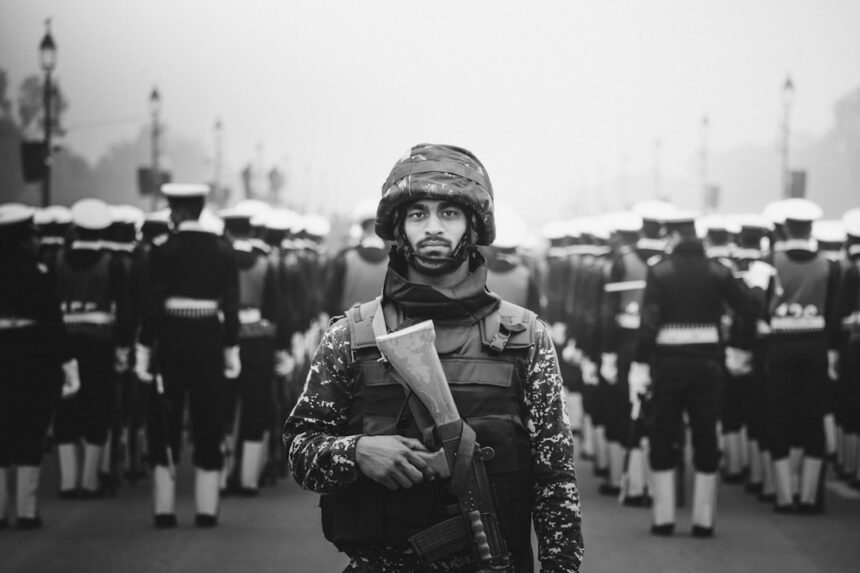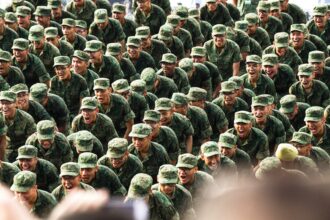In the contemporary landscape of global defense, the issue of cost disparity has emerged as a significant concern. Nations around the world allocate vast sums of money to their military forces, yet the effectiveness and efficiency of these expenditures can vary dramatically. This disparity raises critical questions about how resources are utilized and whether they translate into enhanced military capabilities.
As countries grapple with the complexities of modern warfare, understanding the nuances of military spending becomes essential for policymakers and citizens alike.
The allocation of funds to defense can influence a nation’s standing on the global stage, impacting everything from diplomatic negotiations to military alliances.
As such, a comprehensive examination of the factors contributing to this disparity is crucial for fostering a more equitable and effective approach to military expenditure.
Key Takeaways
- Cost disparity in modern military is a significant issue that affects national budgets and military capabilities.
- Historical perspective on military spending shows a trend of increasing costs and budget allocation for defense.
- Factors contributing to cost disparity include technological advancements, rising personnel costs, and procurement of advanced weaponry.
- Budget allocation plays a crucial role in determining a nation’s military capability and readiness for defense.
- The influence of technology on military spending is evident in the increasing costs of developing and maintaining advanced weapons systems.
Historical Perspective on Military Spending
To fully grasp the current state of military spending, one must consider its historical context. Throughout history, nations have invested heavily in their armed forces, often in response to perceived threats or conflicts. The aftermath of World War II marked a significant turning point, as countries recognized the need for robust military capabilities to deter aggression and maintain peace.
The Cold War era further intensified this trend, with superpowers engaging in an arms race that saw unprecedented levels of defense spending. As the geopolitical landscape evolved, so too did the nature of military expenditure. The end of the Cold War brought about a shift in priorities, with many nations reassessing their defense budgets in light of new security challenges.
However, the rise of non-state actors and asymmetric warfare has complicated this picture, leading to increased spending in areas such as counterterrorism and cyber defense. Understanding this historical trajectory is essential for analyzing contemporary cost disparities and their implications for global security.
Factors Contributing to Cost Disparity

Several factors contribute to the disparities observed in military spending across nations. One primary element is the economic capacity of a country. Wealthier nations often have more resources at their disposal, allowing them to invest heavily in advanced technologies and extensive military infrastructure.
In contrast, developing countries may struggle to allocate sufficient funds for defense, leading to gaps in capability and readiness. Another significant factor is the strategic priorities of individual nations. Countries facing immediate threats may prioritize military spending over other areas, such as education or healthcare.
This focus can lead to disproportionate allocations that do not necessarily correlate with overall national security needs. Additionally, political considerations often play a role in shaping defense budgets, as leaders may seek to bolster their standing domestically or internationally through increased military investment.
Budget Allocation and Military Capability
| Country | Annual Military Budget (in billions) | Number of Active Military Personnel | Number of Tanks |
|---|---|---|---|
| United States | 610 | 1,400,000 | 6,287 |
| China | 228 | 2,183,000 | 13,050 |
| Russia | 65 | 1,013,628 | 21,932 |
| India | 71 | 1,395,100 | 4,292 |
The relationship between budget allocation and military capability is complex and multifaceted. While higher spending does not always equate to greater effectiveness, it is undeniable that adequate funding is essential for maintaining a capable military force. Nations must balance their budgets to ensure that they can invest in personnel, training, equipment, and technology—all critical components of military readiness.
Moreover, the allocation of resources can significantly impact a nation’s ability to respond to crises. Countries with well-funded militaries can afford advanced training programs and cutting-edge technology, enhancing their operational effectiveness. Conversely, those with limited budgets may find themselves ill-equipped to address emerging threats or engage in international peacekeeping efforts.
This disparity can create vulnerabilities that adversaries may exploit, underscoring the importance of strategic budget planning.
Impact of Technology on Military Spending
The rapid advancement of technology has transformed the landscape of military spending in profound ways. Modern warfare increasingly relies on sophisticated systems such as drones, cyber capabilities, and artificial intelligence. As nations strive to keep pace with these developments, they often find themselves compelled to allocate substantial portions of their budgets toward research and development.
However, the integration of new technologies into existing military frameworks can be costly and time-consuming. Nations must not only invest in cutting-edge equipment but also ensure that their personnel are adequately trained to operate these systems effectively.
Comparison of Defense Budgets Among Nations

A comparative analysis of defense budgets among nations reveals stark contrasts that highlight the issue of cost disparity. The United States consistently ranks as one of the highest spenders on defense globally, allocating hundreds of billions annually to maintain its military dominance. In contrast, many smaller nations allocate significantly less, often resulting in limited capabilities and reliance on alliances for security.
This disparity raises questions about equity in global defense spending. While larger nations may justify their expenditures based on strategic interests and global responsibilities, smaller countries often face challenges in securing adequate funding for their defense needs. This imbalance can lead to tensions within international relations, as nations with limited military capabilities may feel vulnerable or marginalized on the world stage.
The Role of Private Military Contractors
The rise of private military contractors (PMCs) has added another layer of complexity to the discussion surrounding military spending and cost disparity. These entities provide a range of services, from logistical support to direct combat operations, often at a fraction of the cost associated with traditional military forces. As governments increasingly turn to PMCs to supplement their capabilities, questions arise about accountability, effectiveness, and the long-term implications for national security.
While PMCs can offer flexibility and efficiency, their involvement also raises concerns about transparency and oversight. The reliance on private entities for critical military functions can blur the lines between public accountability and private profit motives. This dynamic can exacerbate existing disparities in military spending, as wealthier nations may have greater access to high-quality contractors while others struggle to secure reliable support.
Challenges in Balancing Military Spending and National Budgets
Balancing military spending with national budgets presents significant challenges for governments worldwide. As countries face competing demands for resources—such as healthcare, education, and infrastructure—decisions regarding defense expenditures become increasingly contentious. Policymakers must navigate complex political landscapes while ensuring that national security remains a priority.
Moreover, economic downturns can further complicate these decisions. During times of financial strain, governments may be forced to make difficult choices regarding defense budgets, potentially compromising military readiness or capability. This tension between immediate fiscal responsibilities and long-term security needs underscores the importance of strategic planning and prioritization in defense spending.
The Influence of Geopolitical Factors on Military Expenditure
Geopolitical factors play a crucial role in shaping military expenditure patterns across nations. Regional conflicts, historical rivalries, and emerging threats all influence how countries allocate their defense budgets. For instance, nations situated in volatile regions may prioritize military spending as a means of deterrence against potential aggressors.
Additionally, alliances and partnerships can impact defense expenditures significantly. Countries that are part of collective security arrangements may feel compelled to increase their spending to meet alliance commitments or enhance interoperability with partner forces. This dynamic can create disparities between nations within alliances, as some may invest heavily while others contribute less.
Strategies for Addressing Cost Disparity in Modern Military
Addressing cost disparity in modern military spending requires a multifaceted approach that considers both domestic priorities and international obligations. One potential strategy involves fostering greater collaboration among nations to share resources and expertise. Joint exercises and training programs can enhance interoperability while reducing individual costs associated with maintaining separate capabilities.
Furthermore, investing in innovative technologies that promote efficiency can help mitigate disparities in spending. By leveraging advancements such as artificial intelligence and automation, nations can optimize their defense operations without necessarily increasing their budgets significantly. This approach not only enhances military effectiveness but also promotes a more equitable distribution of resources across nations.
Conclusion and Future Outlook
In conclusion, cost disparity in modern military spending presents a complex challenge that requires careful consideration from policymakers worldwide. As nations navigate an increasingly interconnected global landscape marked by evolving threats and technological advancements, understanding the factors contributing to these disparities becomes paramount. Looking ahead, addressing cost disparity will necessitate collaboration among nations and innovative approaches to resource allocation.
By prioritizing efficiency and strategic partnerships, countries can work towards a more balanced approach to military spending that enhances global security while respecting individual national priorities. The future outlook hinges on the ability of governments to adapt to changing circumstances while ensuring that their defense expenditures align with both current needs and long-term objectives.
The issue of cost disparity in modern military operations is a growing concern, as highlighted in various discussions about defense spending and resource allocation. A related article that delves into the intricacies of military expenditure and its implications can be found on the “In The War Room” website. This article provides an in-depth analysis of how financial imbalances affect military readiness and strategic capabilities. For more insights, you can read the full article by visiting In The War Room.
FAQs
What is cost disparity in modern military?
Cost disparity in modern military refers to the significant differences in the costs of military equipment, technology, and operations between different countries and military organizations.
What factors contribute to cost disparity in modern military?
Several factors contribute to cost disparity in modern military, including differences in labor costs, procurement processes, technology development, and economies of scale.
How does cost disparity in modern military impact military capabilities?
Cost disparity in modern military can impact military capabilities by affecting the quantity and quality of equipment and technology that a military can afford, as well as its ability to maintain and sustain its forces.
What are some examples of cost disparity in modern military?
Examples of cost disparity in modern military include the differences in the costs of fighter jets, naval vessels, and missile defense systems between different countries and military organizations.
How do countries address cost disparity in modern military?
Countries address cost disparity in modern military through various means, including international partnerships, joint procurement programs, and efforts to streamline and optimize their defense spending.




